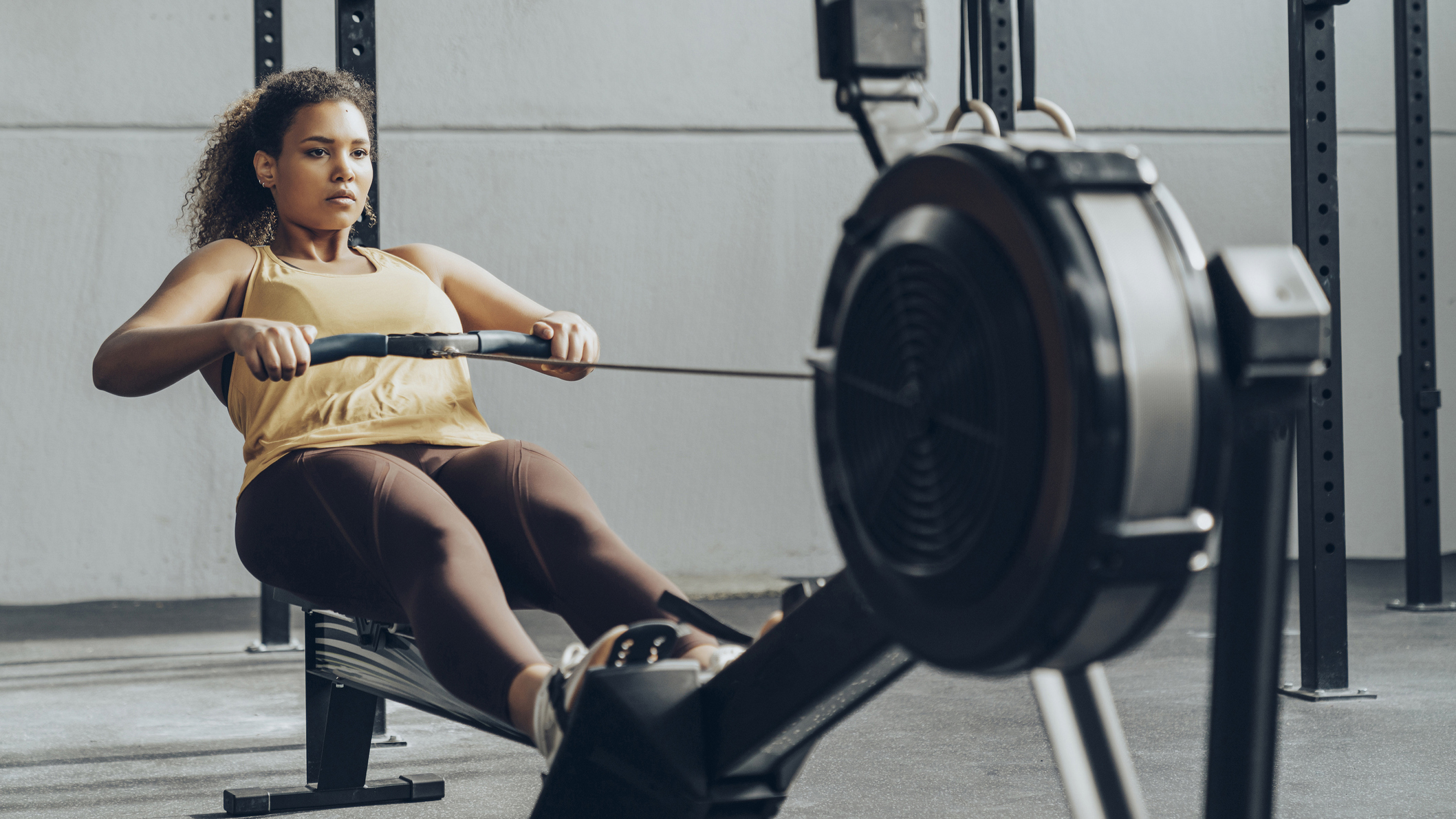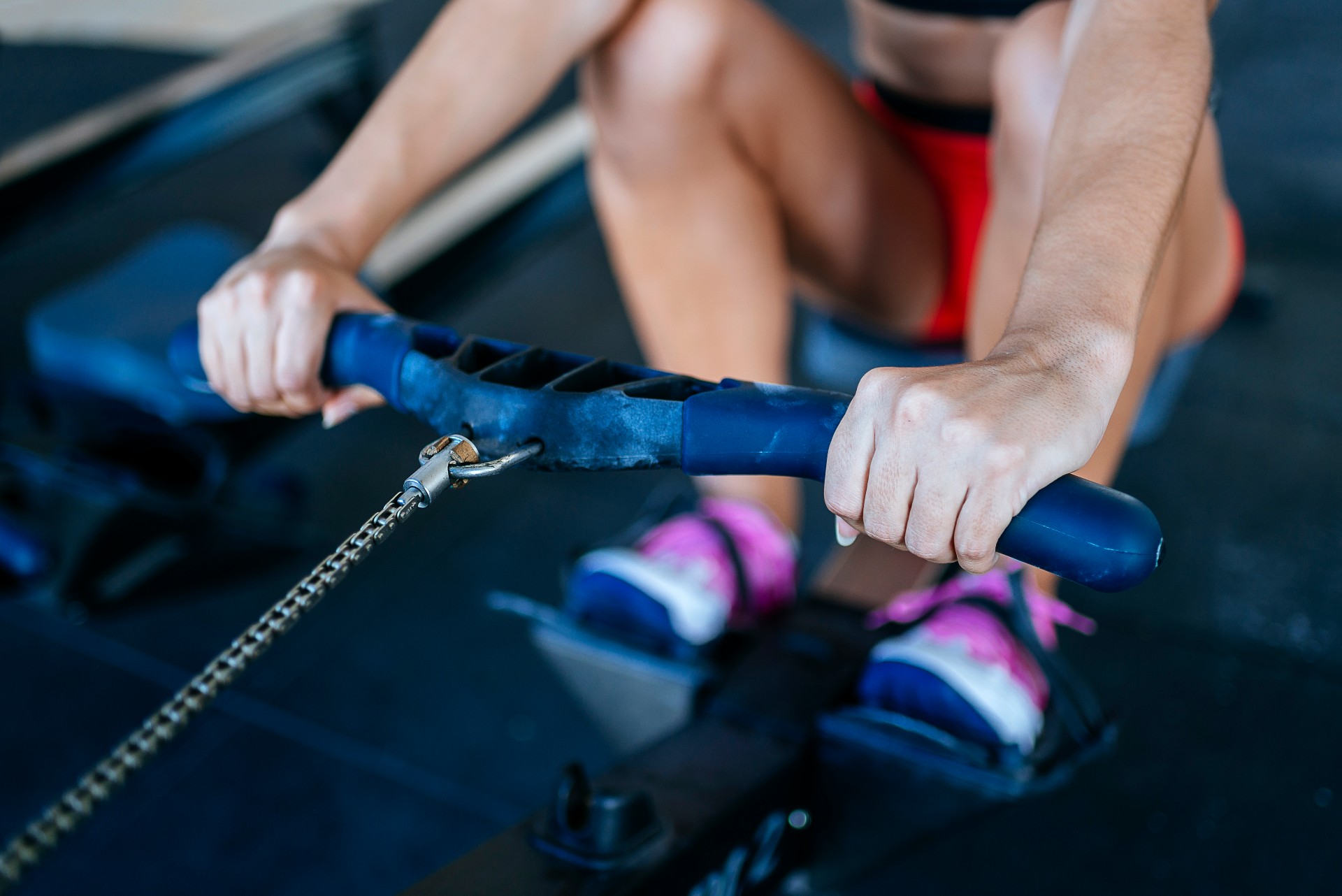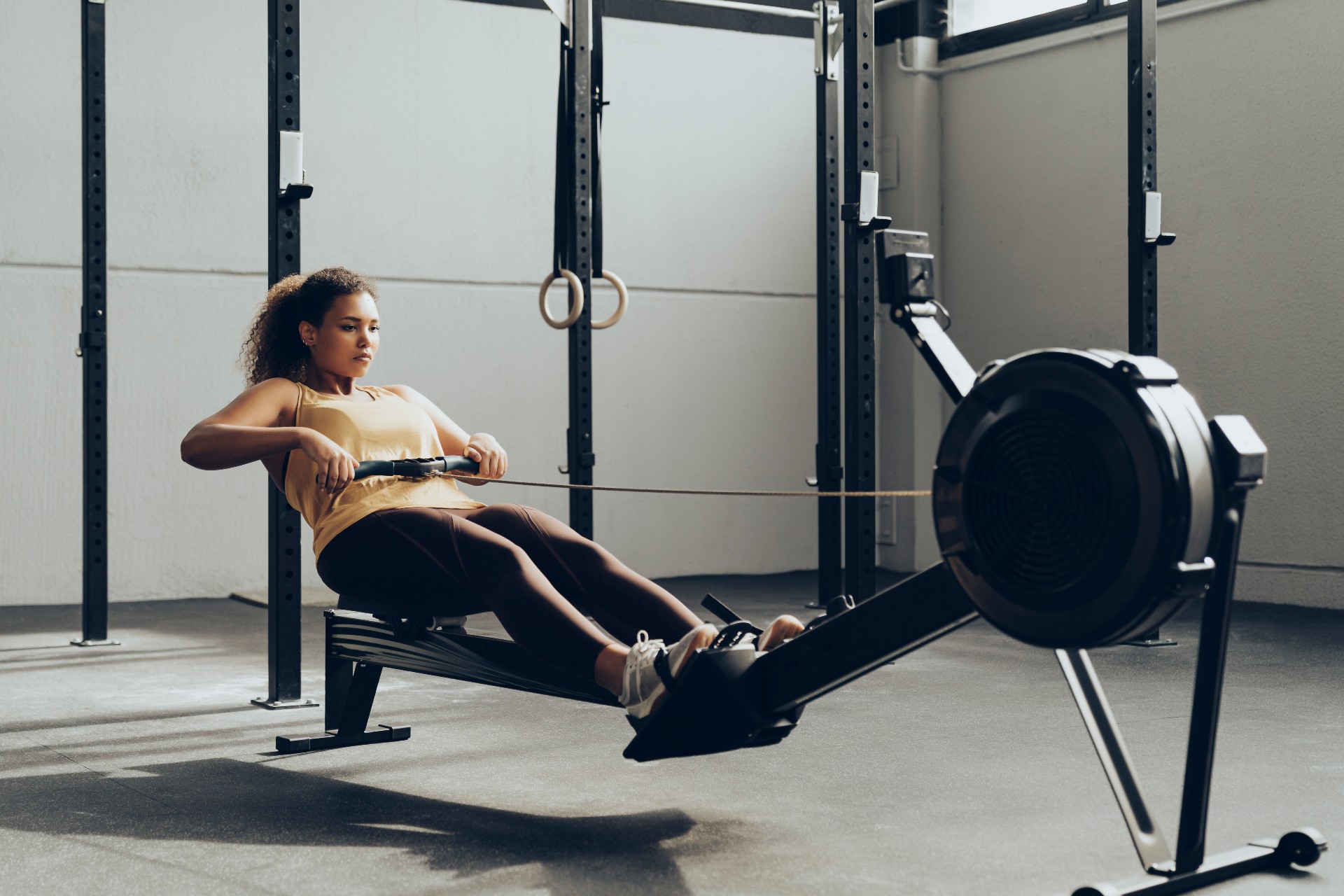This 30-day rowing for weight loss plan builds strength and burns fat
Use this rowing workout plan to strengthen your whole body, engage your core, and boost your metabolism


Becks Shepherd
Looking to take up rowing for weight loss? We don’t blame you. This joint-friendly form of exercise can burn fat fast and works multiple muscles at once, helping to tone and define different muscle areas while improving your overall fitness.
You’ll find a rower in most gym facilities, or if you fancy the convenience of having one on demand, then we’ve rounded up some of the very best rowing machines that you can use at home, including foldable rowers that are easy to store.
During a rowing machine workout for weight loss, you’ll be sure to fire up your leg, back, arm and core muscles. Sarah Craske, personal trainer and owner of UK-based F45 Cambridge Station, seconds this: “The rowing machine gives you a full-body workout and uses roughly 86% of your muscles.”
Craske has put together a 30-day plan designed specifically for weight loss results. Rest days feature heavily in the plan—don’t be tempted to skip these, as they offer an important respite for your muscles, which will allow them to grow and repair.
Sarah Craske is a personal trainer and owner of the F45 Cambridge Station workout studio. Along with the studio's head trainer, Callum Osborne, she co-founded OutTrain, a fitness events company.
30-day rowing for weight loss workout plan

Ready to get rowing? Give Craske's 30 day plan a go and see the results for yourself. If you're not sure what any of the terms or exercises mean, scroll down to our rowing terms glossary.
Day 1
Workout for 30 mins, performing six rounds of the following:
Start your week with achievable workout ideas, health tips and wellbeing advice in your inbox.
- 1 minute rowing at a moderate effort
- 1 minute power strokes at an increased speed
- 1 minute power strokes at an increased speed from previous
- 30 seconds rowing at max effort
- 90 seconds easy pace to cool down
Day 2
Workout for around 24 to 32 minutes, completing 3-4 rounds of the following. Incorporate the outlined floor exercises and take 30 seconds rest in between exercises.
- 1 minute power strokes at a fast pace
- Floor exercise: 10 reps push ups
- Floor exercise: 10 reps Russian twists
- Floor exercise: 10 reps sumo squats
- 1 minute row at an easy pace
Day 3
30 mins. As many rounds as you can.
- 10 power strokes
- 10 recovery strokes
- 10 power strokes
- 10 recovery strokes
Day 4
REST DAY! Be sure to take some time to recover and soothe sore muscles to ward off the dreaded DOMS. The best foam rollers can help.
Day 5
25 mins at low intensity. Row at a speed that is comfortable for the duration of 25 minutes.
Day 6
Workout for 20 mins, doing two rounds of 10 minute, high intensity work. Row at a fast pace for 10 minutes without stopping. Take a 30 seconds rest and then repeat.
Day 7
Do a distance challenge. Row at a comfortable speed until you reach 750 meters on the machine.
Day 8
REST DAY
Day 9
Workout for 36 minutes, completing six rounds of the following:
- 1 minute at a moderate effort
- 1 minute power strokes at an increased speed
- 30 seconds max effort
- 90 seconds easy pace to cool down
Day 10
Workout for 30 minutes, doing two rounds of 15 minute, high intensity work. Row at a fast pace for 15 minutes without stopping. Take 30 seconds rest and then repeat.
Day 11
Complete another distance challenge. Row at a comfortable speed until you reach 1000 meters on the machine.
Day 12
REST DAY
Day 13
Workout for 24 - 32 minutes, completing 3-4 rounds of the following. Incorporate floor exercises and take 30 seconds rest in between exercises.
- 1 minute power strokes at a fast pace
- Floor exercise: 10 reps push ups
- Floor exercise: 10 reps Russian twists
- Floor exercise: 10 reps sumo squats
- 1 minute row at an easy pace
Day 14
Distance challenge. Row at a comfortable speed until you reach 1500 meters on the machine
Day 15
30 mins of low intensity work. Row at a speed that is comfortable for the duration of 30 minutes.
Day 16
REST DAY
Day 17
30 mins. As many rounds as you can of the following.
- 10 power strokes
- 10 recovery strokes
- 10 power strokes
- 10 recovery strokes
Day 18
40 minutes of work, doing two 20 minute high intensity sessions. Row at a fast pace for 20 minutes, take 30 seconds of rest and then repeat.
Day 19
20 minutes of work at a high intensity. Row 250 meters on the machine. Rest for one minute, then repeat.
Day 20
REST DAY
Day 21
Working for around 24 - 32 minutes, complete 3-4 rounds of the following. Incorporate floor exercises and take 20 seconds rest in between exercises.
- Row until you hit 30 calories
- Floor exercise: 30 sit ups
- On the machine: perform 30 sit ups
- On the machine: perform 30 Russian twists
- Row until you hit 30 calories
- Rest for one minute, then repeat.
Day 22
30 mins of work, completing as many rounds as you can.
- 10 power strokes
- 10 recovery strokes
- 10 power strokes
- 10 recovery strokes
Day 23
25 mins of low intensity work. Row at a speed that is comfortable for the duration of 25 minutes.
Day 24
REST DAY
Day 25
Distance challenge. Row at a comfortable speed until you reach 500 meters on the machine. Repeat this three times, rest for 30 seconds in between intervals.
Day 26
Work for just over 30 minutes, complete 3-4 rounds of the following. Incorporate floor exercises and take 20 seconds rest in between exercises.
- Row until you hit 30 calories
- Floor exercise: 30 sit ups
- On the machine: perform 30 sit ups
- On the machine: perform 30 Russian twists
- Row until you hit 30 calories
- Rest for one minute, then repeat.
Day 27
REST DAY
Day 28
Work for 50 minutes, doing two rounds of high intensity 25 minute work. Row at a fast pace for 25 minutes, take 30 seconds rest and then repeat
Day 29
Workout for 40 minutes at a low intensity. Row at a speed that is comfortable for the duration of 40 minutes
Day 30
Finish up with a distance challenge. Row at a comfortable speed until you reach 2000 meters on the machine
How to use a rower machine
Craske explains that it's important to practice correct form on the rower to avoid injury. First, slide your feet into the foot plates. The strap goes over the base of your big toe. Ensure that the straps are well adjusted, and your feet fit tightly into them.
Next, grab onto the handle — not too tightly — with an overhand grip. Ensure you are sitting tall in the seat.
'Your arms should be straight in front of you while flexing the ankles and knees," says Craske. "Keep shins at a vertical angle from the floor, and pull your shoulders down while engaging your core muscles." To protect your lower back, slightly lean forward, making sure you keep tall and straight.
"The next movement is all in the legs, pushing against the foot plates. During this, your core remains braced. Once you push back, hinge the hips and lean your torso back about 45 degrees. This is then followed by your arms pulling the handle towards the torso – aiming just under your ribs."
To finish, your body should be braced as your knees are locked out, as in the video above. The torso will be at a very small angle, and elbows will be back with the handle pulled into the base of your sternum. It's the opposite to the position you started in.
Craske adds that when you drive back, it's all in the legs. "Your quads should really be the ones feeling it after your rowing workout."
Understanding rowing terms
- Stroke: This is made up of different parts: the catch, the drive and the recovery.
- The catch: The first part of any rowing movement, when you're down at the front of your rowing machine, knees bent and upper body leaning slightly forward.
- The drive: Pushing away with your legs, leaning back and pulling the cable towards you.
- The recovery: Return to the original catch position. This is when your hands move away from your body and your seat slides down the machine’s rail, back to the start.
- Stroke rate: This indicates the number of strokes you take. A stroke rate is measured in strokes per minute, or SPM. 'A good consistent stroke rate is 24-30 SPM, but you'd go even faster if racing against the clock,' says Craske.
- Damper settings: The difficulty or resistance level on your rowing machine. Usually it's scaled at 1-10, and if you're using a rowing machine with a fan, it controls the airflow through the wheel. The more air goes in, the more effort it takes to row. Craske recommends starting at 3-6 whilst you build good technique.
- Power strokes: Rowing hard and fast for sprints or HIIT sessions. Give it all you've got!
- Recovery strokes: The opposite. Slower strokes to catch your breath..

What to eat for this rowing workout plan
"Ideally, eat between two and four hours before training," says Craske who advises a high-carb meal to provide plenty of energy. After your workout, Craske recommends plenty of water as well as a light-carb, high-protein snack, which "ensures proper recovery and muscle development". You could also try a post-workout shake, using one of our best protein powder for weight loss entries.
About four hours after your rowing machine workouts for weight loss session, eat a well-balanced meal containing protein-rich foods such as eggs, chicken and lean meats. If you're vegetarian or vegan, you can try nuts, legumes, tofu or other soy products. Check our best vegan cookbooks for loads more protein-packed, post-workout meal options.
Lucy is a freelance journalist specializing in health, fitness and lifestyle. She was previously the Health and Fitness Editor across various women's magazines, including Woman&Home, Woman and Woman’s Own as well as Editor of Feel Good You. She has also previously written for titles including Now, Look, Cosmopolitan, GQ, Red and The Sun.
She lives and breathes all things fitness; working out every morning with a mix of running, weights, boxing and long walks. Lucy is a Level 3 personal trainer and teaches classes at various London studios. Plus, she's pre- and post-natal trained and helps new mums get back into fitness after the birth of their baby. Lucy claims that good sleep, plenty of food and a healthy gut (seriously, it's an obsession) are the key to maintaining energy and exercising efficiently. Saying this, she's partial to many classes of champagne and tequila on the rocks whilst out with her friends.
